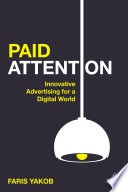

Looking ahead, the book explores emerging trends in attention dynamics, including the impact of artificial intelligence, virtual reality, and changing consumer expectations. The author posits that as technology evolves, so too will the ways in which attention is captured and maintained. This forward-looking perspective encourages readers to stay adaptable and innovative in their approaches to attention management, preparing them for the future landscape of the attention economy.
Continue readingIn the digital age, attention has become a scarce resource. The book explores how businesses and individuals must navigate this new economy where the ability to capture and maintain attention dictates success. It discusses the implications of attention scarcity on marketing strategies, consumer behavior, and content creation. The author argues that understanding the value of attention can lead to more effective communication and engagement strategies, ultimately driving better business outcomes.
Continue readingThe concept of the attention economy is central to the book, emphasizing that attention is a commodity that can be bought, sold, and traded. The author delves into the mechanisms that businesses use to attract attention, such as social media algorithms, targeted advertising, and influencer marketing. This section highlights the ethical considerations surrounding the manipulation of attention and the responsibility of companies to create value rather than just noise in the marketplace.
Continue readingUnderstanding the psychological factors that influence attention is crucial for both marketers and consumers. The book discusses cognitive biases, emotional triggers, and the role of narrative in capturing attention. It emphasizes how storytelling can be a powerful tool for engagement and how recognizing these psychological elements can lead to more authentic connections between brands and consumers.
Continue readingThe book outlines strategies for designing products that inherently capture attention. This includes principles of user experience (UX) design, gamification, and the importance of feedback loops. The author suggests that attention-driven products not only attract users but also retain them, creating a cycle of engagement that benefits both the user and the business. This section serves as a guide for entrepreneurs and product developers looking to innovate in a crowded marketplace.
Continue readingAs businesses increasingly compete for attention, the ethical implications of attention management come to the forefront. The author argues for a balanced approach where companies prioritize user well-being alongside their profit motives. This includes discussions on data privacy, the impact of addictive design, and the responsibility of brands to foster healthy consumer habits. The book encourages a shift towards transparency and ethical practices in the pursuit of attention.
Continue readingThe book emphasizes the importance of measuring attention through various metrics and analytics tools. It discusses how businesses can track engagement, conversion rates, and user behavior to refine their strategies. By leveraging data, companies can gain insights into what captures attention and adjust their approaches accordingly. This section serves as a practical guide for marketers and product managers looking to optimize their attention-driven strategies.
Continue reading